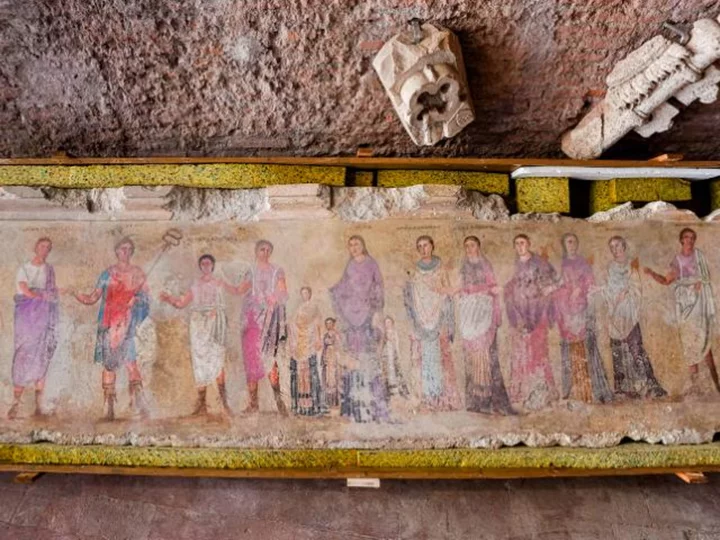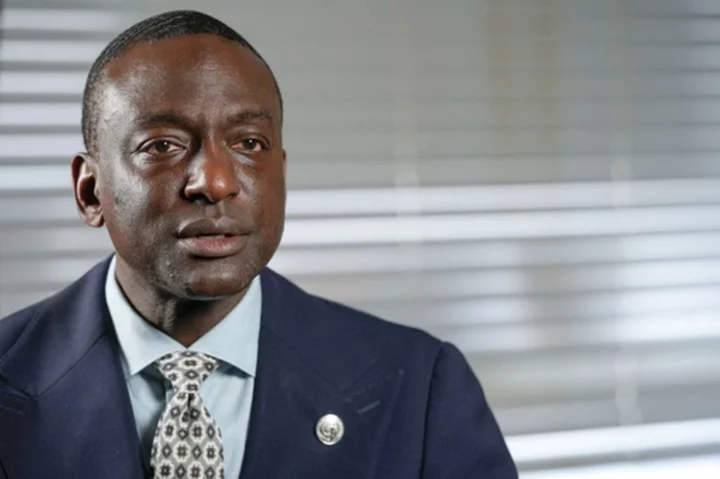Some 750 looted archaeological treasures have been seized from the notorious British antiquities trader Robin Symes and returned to Italy after a decades-long fight for their return, the Carabinieri art police said on Wednesday.
The artifacts, which according to the Italian cultural ministry are worth more than €12 million ($12.9 million), will go on display in Rome's Castel Sant'Angelo museum as part of a collection of stolen art that has found its way home.
The objects "offer a cross-section of the many productions of ancient Italy and the islands," including "numerous and diversified archaeological contexts (funerary, cultural, residential and public) ... concentrated in particular in Etruria and Magna Graecia," according to a statement from the Ministry of Culture.
Among the recovered items from the Roman and Imperial eras is a bronze tripod table from an aristocratic Etruscan family, two parade headgear for horses, two funerary paintings, male busts in marble, various portions of statues and bronzes, and a wall painting with the depiction of a small temple, likely from a Vesuvian residence, according to the ministry statement.
There are also precious gems set in gold, silver, bronze, as well as bone and amber.
Other pieces include weapons, sarcophagi, funerary urns, ritual objects, furnishings in bronze and marble, mosaic and painted decorations.
The artifacts originate from "clandestine excavations on Italian territory" and were illegally obtained by Symes Ltd, the company owned by Symes, a major trafficker of cultural goods, according to the ministry statement.
"The company, which had always opposed the repeated recovery attempts by the Italian Judicial Authority, (and) subject to bankruptcy proceedings in the United Kingdom, was also sued in Italy, through the Attorney General of the State, for the return of the goods or civil compensation for damages," Italian Attorney General Lorenzo d'Ascia said during the press conference.
Symes, who sold precious artifacts to some of the world's most prestigious museums, fell from grace in 2016 when a Swiss warehouse he rented was raided. Now in his 80s, he has not spoken to the press for years.
During the trial of Marion True, the former curator of the J. Paul Getty Museum who was indicted for illegal trafficking of antiquities in Italy in 2005, Symes denied trafficking illegal art, saying he had always been assured by his collaborators that the provenance of every object he procured was on the market legally. (The charges against True were eventually dropped.)
He was often investigated but never charged for his alleged crimes despite countless attempts by Italy and Greece. But old statutes of limitations laws prohibited prosecution.
A further 71 objects, currently in the United States, will be recovered in the next few days, Brigadier General Vincenzo Molinese, commander of the Carabinieri Art Squad, said.
The return of these 750 objects marks another success in Italy's attempt to recover its stolen treasures. Minister of Culture Gennaro Sangiuliano said at the press conference: "The recovery of illicitly stolen cultural heritage is one of the priorities of my program; protecting it also means preventing our heritage from being plundered by unscrupulous traffickers."









